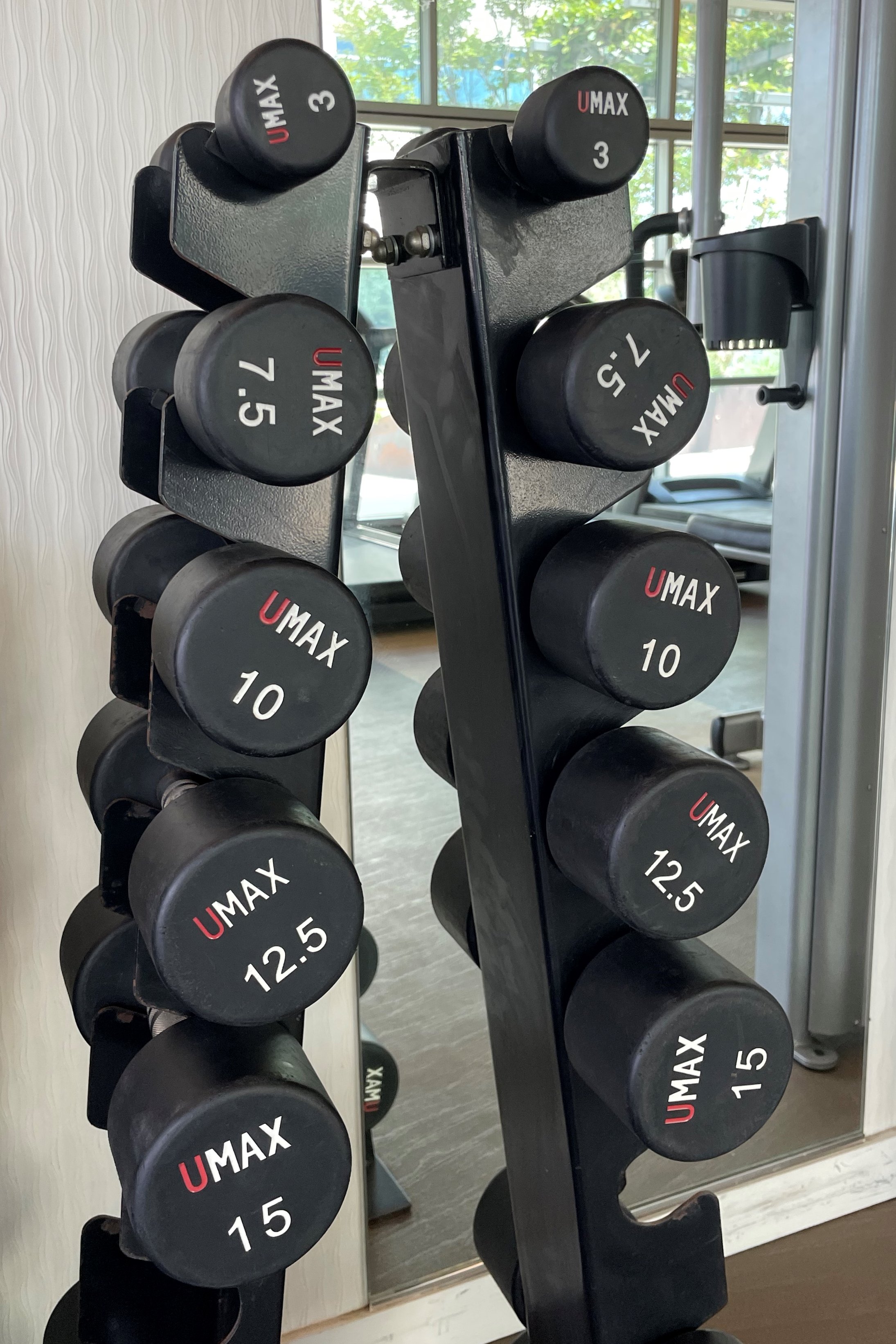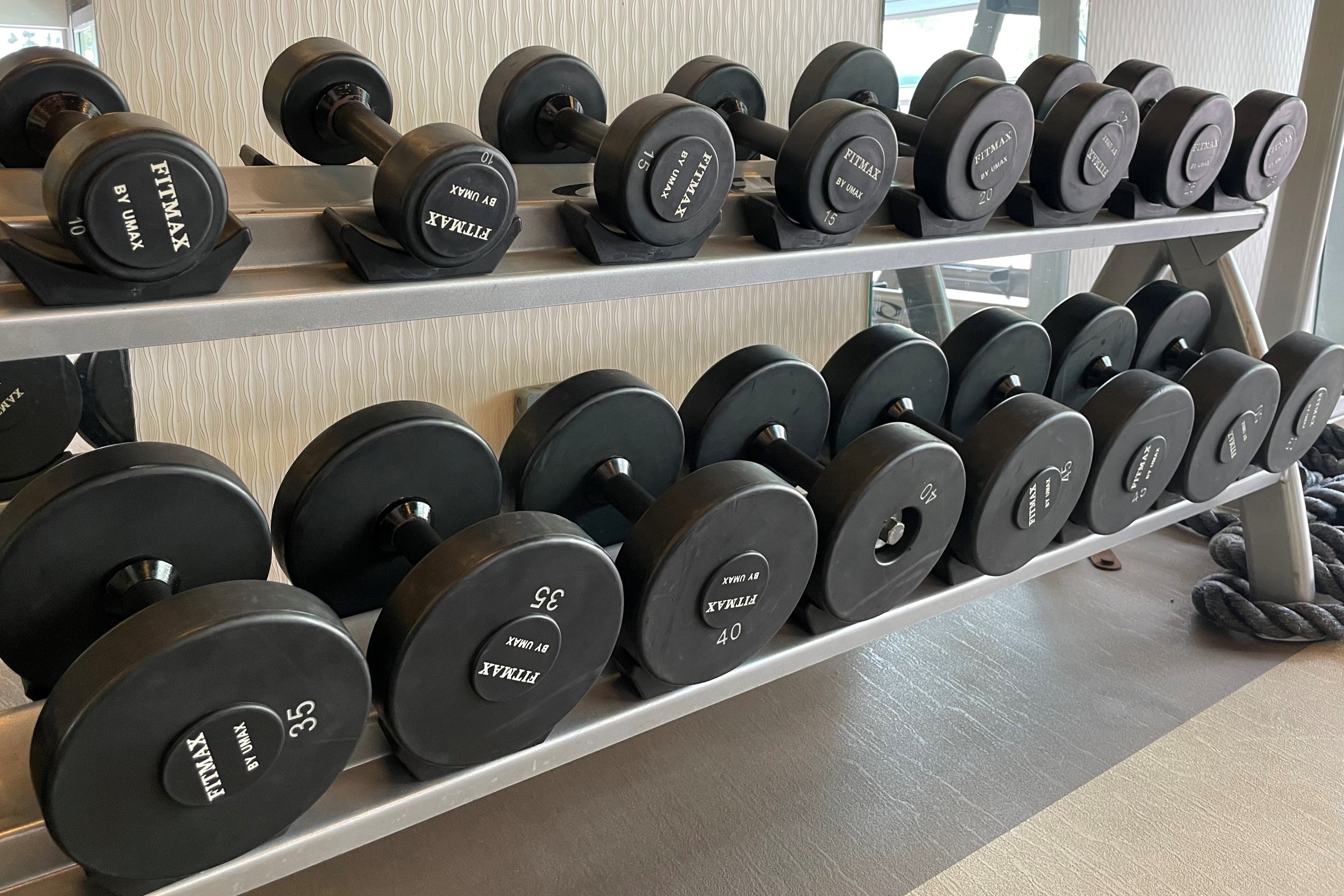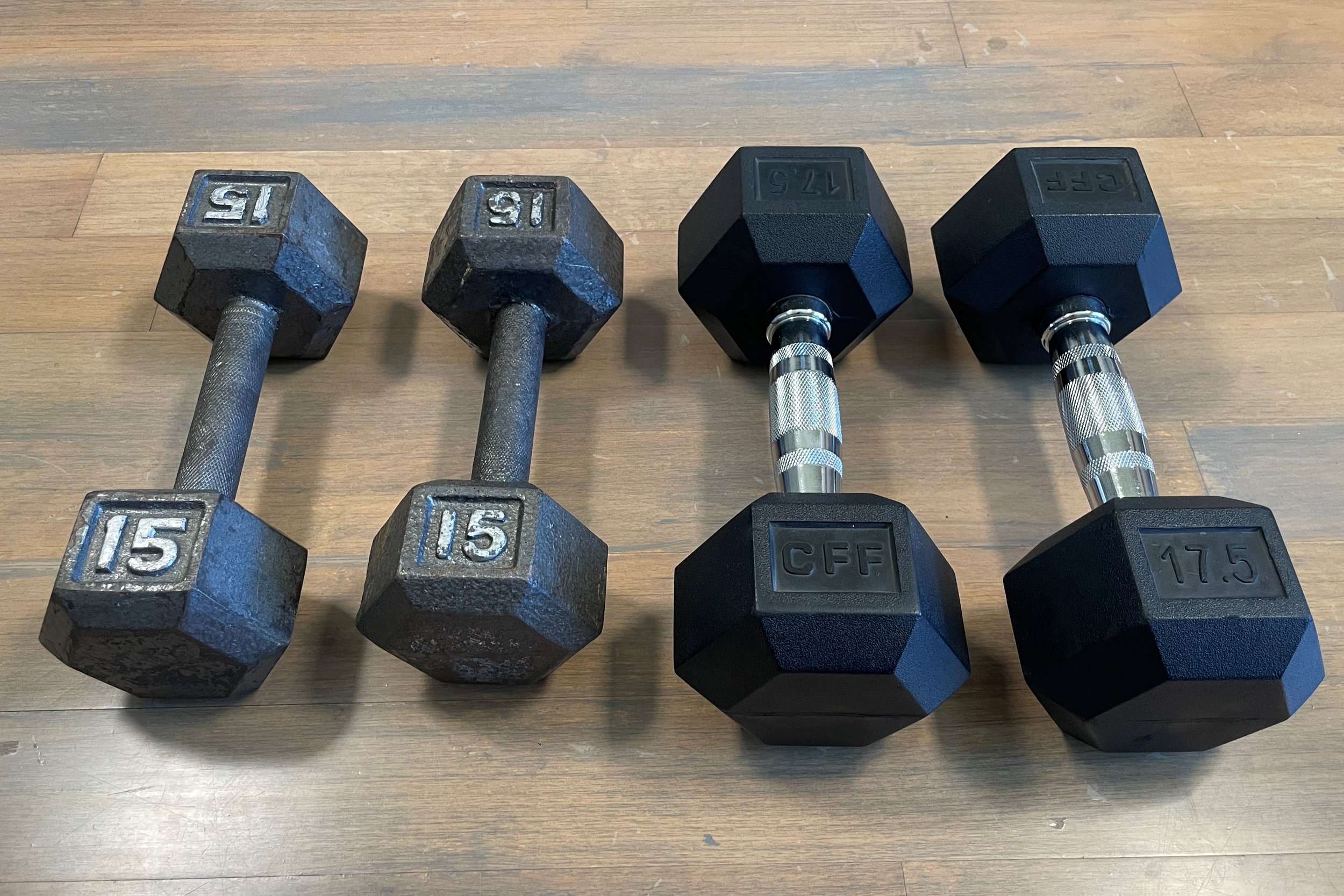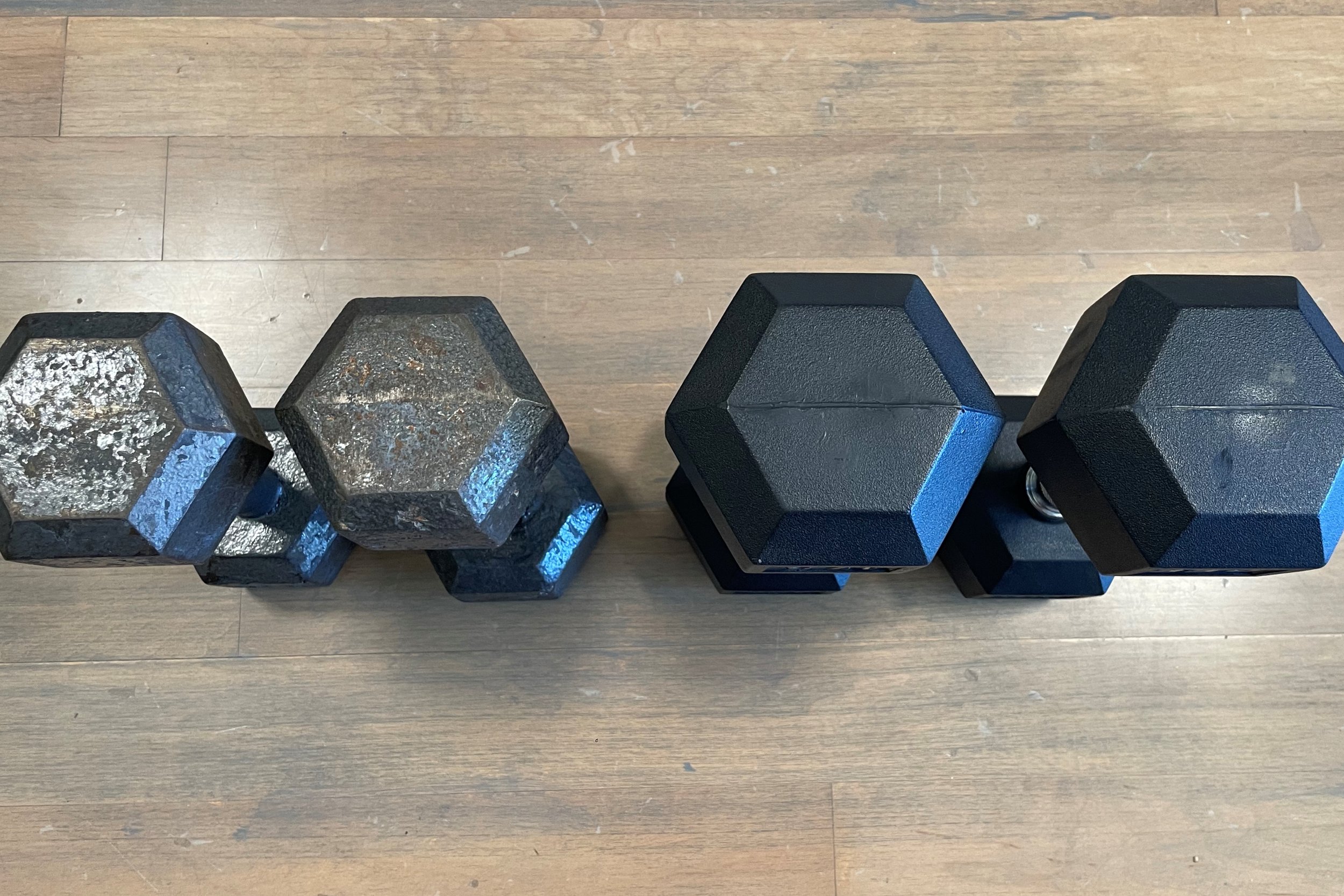Dumbbell Crash Course! Part 2: Dumbbell types
Which one is my favorite? Hmmm….
Last week in my Dumbbell Crash Course I discussed some basics to think about when buying dumbbells for your home gym. This week, I’ll discuss the different types of dumbbells you’ll commonly see for sale or at the gym. What do I think about each type? Read on and find out!
Types and Styles of Weights
Neoprene
You’ll often find neoprene weights sold in beginner weight sets or individually at retail stores. They’re relatively inexpensive and can come in fun colors. However, choose your colors wisely: the lighter ones will look kinda gross if you use them a lot. No, don’t ask me how to clean them, I have no clue.
Neoprene weights in 2lb, 3lb and 6lbs. As you can see, the 6lb weights have aged as gracefully as a week-old banana.
I like neoprene weights because they are usually hex-shaped which means they won’t roll away from you. The neoprene coating also makes them easy to grip. And as long as you don’t break the coating, you don’t have to worry about your weights rusting.
But most importantly, if you’re starting out with weights, neoprene size offerings are well-varied. I have seen 1lb, 2lb, 3, 4, 5, 6, 8, 10, 12, and 15 pound weights. For some moves and some clients, even a 1lb increase can be a big step up, so it’s great if you can afford and have space for a lot of them.
I don’t know if I’ve really seen neoprene weights past 20 lbs…so you can grow out of these pretty easily. But for many people, these are a quick and easy way to add resistance training.
Circular
You’ll typically see this style of weights at the gym. Why? Because the way that they are manufactured with a urethane coating means that they are super-durable. This makes sense for gyms, where the weights are getting used a lot more than in your at-home gym. This durability, however, also makes them more expensive than hex dumbbells and neoprene.
The weights are also a bit more uniform in form factor, which makes a set of them look more aesthetically pleasing (if that’s important to you). And these dumbbells can get large! Dumbbells can go up to 200lbs. Yowza!
I’ve seen circular weights with both smaller-diameter weights — they are more similar to hex dumbbells—and larger-diameter circular weights. Here are two examples of circular weights in the wild:
To be honest, I’m not super crazy about this style of dumbbell. It’s easy for the dumbbells to roll away from you if you set them down. I also feel that they can be a little more cumbersome to handle when performing exercises where you hold the weight by both ends (especially for the larger-diameter ones). If you ever try to perform moves in plank—for example, renegade rows—where your hands are resting on the weights, this type of weights can be very unstable.
For the larger diameter circular dumbbell, I feel like sometimes the size of the weight can get in the way of certain moves, like side lunges. However, these particular weights can be good for simulating kettlebells because they give you a little more surface area to hold onto.
Hex Dumbbells
These are definitely my favorite in terms of stability. In terms of style, you will commonly see painted metal dumbbells and coated dumbbells, like those shown below:
Either hex type are fine, although my heart belongs to the coated ones. Why? Not only are they stable, but the coating makes them easier to grip on the ends (especially when your hands are sweaty!) and less likely to damage surfaces when you set them down. Also, I can’t tell you how many times I’ve been “rained on” by paint flecks when my painted dumbbells tap overhead. Bleah! Not to mention that when the paint peels off, it can lead to rusting of the weight (see above on the right).
Note that for any dumbbells that have metal, even on the handles, that they can be prone to rust over time. It doesn’t affect the performance of the weight of course, but it may make you checking when you had your last tetanus shot.
Most consumer-based hex dumbbells have a rubber coating; however, the top-of-the-line commercial dumbbells will have a urethane coating. Should you splurge on top of the line? Truth be told, a rubber-coated dumbbell will work just fine for the average user; you’re just one person so your weights do not need the durability required of your local gym. But if you have the money and you want dumbbells that will last you a lifetime, the urethane will serve you well.
Adjustable Dumbbells
Adjustable weights come in two main varieties: First, you can get dumbbells that are like mini barbells, where you simply attach weight plates to each side to adjust the total weight. Another option is an all-in-one dumbbell set that includes prearranged weights that are keyed in by moving a dial or pin to the desired weight. The former option allows for lots of flexibility in weight amount, but can be slow to change out the weights. The “dial-a-weight” models are a lot faster to swap out weights, but can be clunky or cumbersome.
Adjustable dumbbells are great if you have a lot of money to invest for a set of weights but you have very limited room. However, it can sometimes be a little awkward to change weights, as often the selection pins need to be lined up properly to “pick up” all of the weight.
I’ll talk more about adjustable weights in Part 3. Until then…what types of weights do you use? Do you have a favorite style? Tell me what you think!






